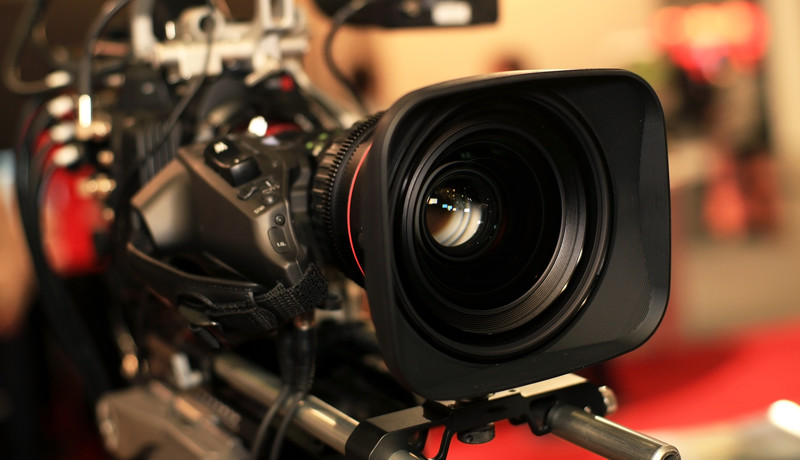Litigators have embraced the use of video depositions in the courtroom. The use of video along with deposition transcription has emerged as a powerful tool to catch the jury’s attention. Video deposition allows jurors to evaluate nonverbal communication such as appearance, facial expressions, eye contact, tone, articulation, and body language to judge the credibility of the witness.
Using videography in depositions offers many benefits:
- Allows the attorney to present testimony of a witness who cannot be physically present in the courtroom
- Enriches deposition transcript
- Saves time by allowing the lawyer and witness to get to the point quickly
- Reveals the deponent’s response to questions by capturing nonverbal cues
- Shows witness testifying in conjunction with physical exhibits such as photographs, drawings, diagrams, maps, medical illustrations, video and computer animations and reconstructions, charts, etc.
- Videotape deposition preserves the testimony of the witness and discourages disruptive behavior or attempts to manipulate by the opposing counsel
- Gives the jury a clear picture of the witness by capturing non-verbal gestures and body language
- Gives the trial attorney a clear idea as to how the witness will testify and act at trial
- Saves expert witness travel costs
- Video-synchronized deposition transcription allows easy search through the file to locate specific parts, and present them to the jury
- Video clips can be created to share with co-counsel or for use in the trial
- Videotaped depositions may help evaluate settlement possibilities
Affordable technology has led to the widespread use of video depositions by lawyers, but lawyers need to check state rules on video depositions for the presentation of evidence at trials. Success in using this visual product also depends on certain considerations. Here are some best practices to help attorneys make the most of video depositions:
Prepare your client for the deposition: Evaluate your client. If this is your client’s first deposition, prepare him/her for it. Spend some time to explain the process, who will be present, and how your client should behave. Make sure your client is dressed for an on-camera appearance, and is comfortable but presents a professional appearance. It’s also important to prepare your client to present himself/herself in the right way. Inform them about body language and eye contact, and what these visual cues communicate to viewers. Positive body language means maintaining correct posture and focusing while speaking or listening. A report published by the American Bar Association lists the key points to review with the deponent as:
- Tell the truth.
- Speak audibly.
- Talk slowly.
- Think before you speak.
- Answer only the question that is asked.
- Stick to your answer.
- Beware of leading questions.
- Be professional and polite.
Deponents should also be advised to answer as quickly as they can after listening carefully to the question and not to argue with the opposing counsel. They should be given time to understand all of these instructions and to review and clarify matters before the actual deposition.
Make sure your video is professional: Make sure the video recording equipment is set up well in advance. Check to ensure that the audio and quality are good. There should be no visual or audio obstructions – it must be possible to see and hear the person interviewed clearly. To avoid technical glitches, hire a professional videographer to keep an eye on the audio and video content of the proceedings. If the deponent needs an interpreter or drawing board or other special requirements to provide testimony, make arrangements for these in advance. Remove all distracting objects and keep the space being recorded free of clutter.
Ensure sound quality: All other electronic devices such as cell phones must be turned off while the video recording is being made. Don’t let shuffling paperwork distort the recording.
Indicate when you’re going off the record: All parties must consent to going off the record. So litigators should state when they go off the record and go back on record. When going off the record in a video deposition, it is important to state whether it is “off the written and video record” or “off the video record”.
As video deposition presents diverse challenges for attorneys and witnesses, experts recommend conducting the witness preparation on videotape, before the actual deposition takes place. The attorney can then work with the witness to prepare for the actual deposition.
Finally, attorneys should preserve the visual evidence with deposition transcription. The contents of deposition should be transcribed accurately to preserve the evidence. Legal transcription outsourcing to an experienced service provider can ensure timely and accurate verbatim transcripts of client testimony. The transcripts of the video proceedings can be saved in an electronic repository for later retrieval and review. Transcripts with captions and subheadings can make the date searchable and easier to locate. The deposition transcript can be aligned with the video based on timestamps, allowing lawyers to search for any word in the transcript and then to immediately view the corresponding video footage. Clips of the recorded proceedings can be selected for inclusion in trial presentations.




